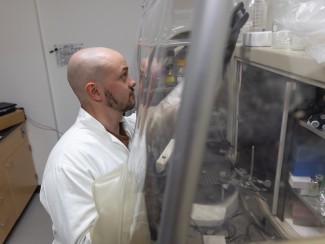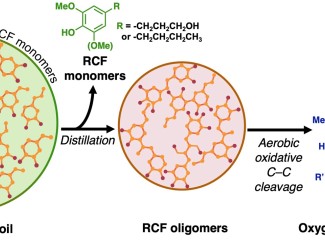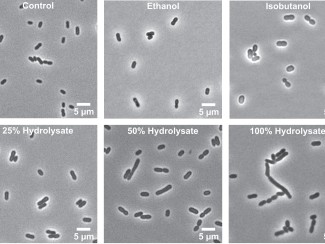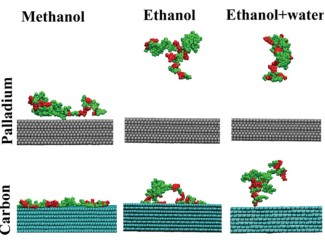
With up to $1.8 million in funding from the U.S. Department of Energy (DOE), scientists affiliated with the Great Lakes Bioenergy Research Center (GLBRC) will conduct research with the potential to turn woody biomass into an economical source of renewable chemicals. Part of the DOE’s “Bioproducts to Enable Biofuels” initiative, the project aims to improve the bottom line of biorefineries nationwide by enabling them to create high-value bioproducts alongside biofuels.
The collaboration will bring together Eric Hegg, Michigan State University professor of biochemistry and molecular biology; David Hodge, Montana State University associate professor of chemical and biological engineering; Shannon Stahl, University of Wisconsin–Madison professor of chemistry; and Bryan Bals, MBI process development engineer. (All four investigators conduct or have conducted research for GLBRC).
We want to reach the equivalent target of $3 per gasoline gallon by generating a low-cost sugar stream. But we also want to generate a clean lignin stream that can be used to make a number of high-value chemicals currently generated from fossil fuels.”
Eric Hegg
For the project, the researchers will focus on two major challenges to producing low-cost biofuels – the high cost of extracting sugars, and the low value of lignin, the portion of biomass that’s so difficult to degrade it’s often treated as a waste product.
To overcome those challenges, Hegg and collaborators will optimize an integrated, two-stage process for generating a sugar stream and a lignin stream from hardwoods, their goal to understand how pretreatment affects what can be made from the lignin as well as how the entire process can drive down fuel price.
“We want to reach the equivalent target of $3 per gasoline gallon by generating a low-cost sugar stream,” says Hegg. “But we also want to generate a clean lignin stream that can be used to make a number of high-value chemicals currently generated from fossil fuels.”
Though mostly famous for its recalcitrance, lignin has the potential to be a renewable source of a number of valuable aromatic chemicals with a variety of industrial applications, and could one day form the chemical building blocks of fragrances, flavors, foams, and adhesives.
According to Hegg, deriving value from lignin will be key to making renewable biomass an economically viable feedstock, and to enabling a bio-based economy. “We really do need the lignin to work for us,” he says. “It’s a challenge and it’s an opportunity.”





